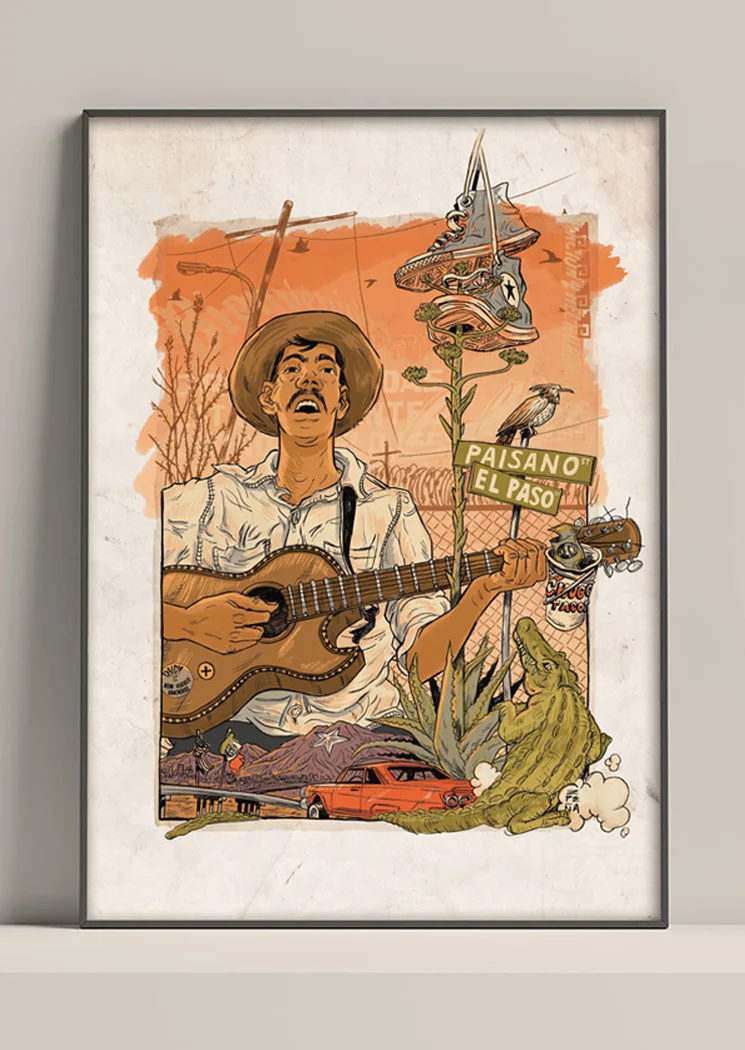
E. Carmen Ramos, acting chief curator of !Printing the Revolution!: The Rise and Impact of Chicano Graphics, 1965 to Now, and Claudia Zapata, a curatorial assistant, oversaw a panel consisting of three Chicano artists. The three artists -- Juan Fuentes, Ester Hernandez, and Zeke Peña, were asked questions about their work, their process, and the inspirations behind their works.
I was particularly interested in Zeke Peña's works as it is a perfect example of just how far Chicanx art has come. When curatorial assistant, Claudia Zapata asked Zeke Peña about how he implements technology to craft visual stories, he explained his process and journey in using technology and art together. I found it very unique and interesting how he began working on community graphics using old-school artistic techniques, then moved on to using technology to support his art.
Claudia also asked Zeke how user interactivity helps support his artistic and political objectives and he discussed how technology not only plays an essential role in the production of his works but also in publishing and distributing it. Zeke described how he uses augmented reality (AR) to continue the progress that has been made by Chicanx artists like Ester Hernandez and Juan Fuentes, who have placed community issues at the forefront of their work. Zeke focuses on creating work that young people can connect to and understand in the hopes that they may be inspired to become active in combatting such issues.
Also, one of the questions all three artists were asked, which pertained to describing what has stayed the same and what has changed in the past 50 years in Chicanx graphics, I especially appreciated Zeke Peña's response. He acknowledged how the methods used in Chicanx graphics have indeed changed, however, the activism that art can inspire has not changed. Zeke mentions being inspired by young folks who are so active in fighting oppression. He also makes note of how terms such as Chicanx, Latinx, and so many more ought to be critically thought about and used. Zeke also describes how, in the past, machismo, anti-blackness, and anti-queer sentiments plagued the Chicano Movement. Fortunately, that is not the case today as young folks call out oppression, racism, sexism, and all other social issues in society.

No comments:
Post a Comment